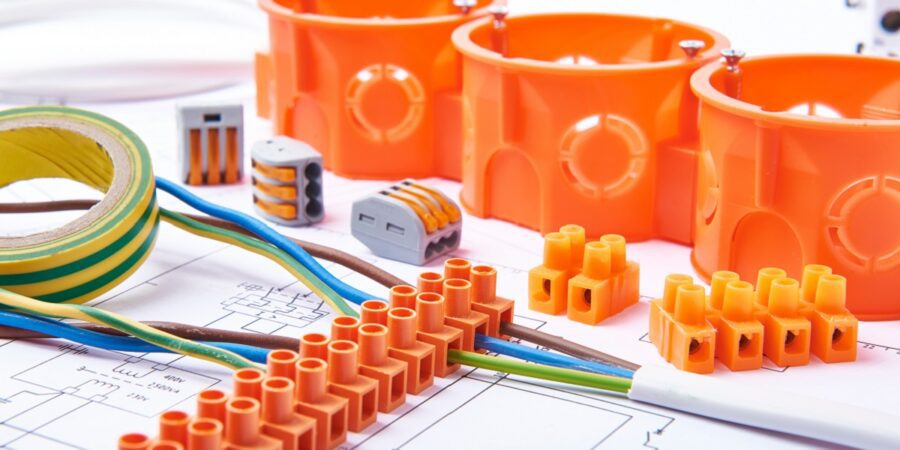
Commercial
Activity-Based Working: What is it?
5 Min Read
Written by: Parcel Pending
Updated Jan 24, 2024
Activity-based working is coming soon to an office near you. In this post, we’ll discuss what it is, the implications of an activity-based work setting on the future of workplace design, and the benefits of embracing the an activity-based workplace.
Activity-Based Working Defined
COVID introduced employers and workers to remote work, but more importantly, it demonstrated the power of employee productivity when working from different places and spaces.
The concept of activity-based working is based upon the principle that certain workplaces in the office should be dedicated to specific activities. For example, activity-based corporate office design trends might include a coffee shop atmosphere for brainstorming or a quiet room for focused writing.
As Dr. Alan Hedge, professor at Cornell University explains1: “The combination of Wi-Fi networks and mobile technologies now allows you to work in multiple locations. That means companies have to think of their entire space as a workspace.”
It also means that the definition of agile working continues to evolve. As the authors of a recent article explain, hybrid work, “…will become primarily a culture space, providing workers with a social anchor, facilitating connections, enabling learning, and fostering unscripted, innovative collaboration.”2
The Benefits of Activity-Based Working
The term “activity-based work” was coined by Erik Veldhoen in his 1994 book entitled The Demise of the Office. This consultant was clearly before his time as he re-imagined office design by eliminating designated desks and looking at every available square foot as an opportunity to create a custom space for a particular task; in essence, he may have had the first take on an activity-based work setting. His initial test case was for an insurance company that subsequently reported that the new activity-based workplace arrangement offered employees a better sense of well-being while boosting employee productivity and employee satisfaction.
The Harvard Business Review recently noted that workday flexibility was key to increased productivity3. More importantly, 96% of professionals wanted more flexibility, but only 47% report having it.
Today, with hybrid work, management expects to add more activity-based workplaces. In fact, 45% of real estate executives anticipate migrating to this new model in the near future.4
An often overlooked benefit of activity-based work is lower real estate costs. Although experts aren’t forecasting companies giving up on their headquarters – as REI did in 2020 – they are seeing that better utilization of office space requires lower square footage. Flexibility remains key, with lobbies used as collaboration spaces or cafeterias used as meeting rooms.
Essential Elements for a Success Activity-Based Work Environment
Good Design
It’s not enough to simply announce a new activity-based initiative; the workspace must be designed or even redesigned to accommodate the variety of different tasks. In short, a task audit identifies the myriad activities that each person conducts and then designs spaces to optimize each task. One company, for instance, AECOM, uses pre-project surveys to find out how employees work and which tools they need (and don’t have) in order to continually listen and improve their offerings.
The Right Office Furniture
Office furniture must telegraph to employees the intended use of that space while also offering flexibility. Rolling whiteboards, file cabinets that double as a stool, height-adjustable desks, and mobile storage units work to create “on the fly” workplaces.
Sensory Experiences
Workplace designers utilize the five senses to give office visitors a sense of how to use each particular space. Loud music, the smell of coffee, and seeing workers “hang out”, clearly signifies that this is an informal gathering space. Soft lightning and absolute silence, on the other hand, indicate it’s a focused workplace.
Signage
If the sensory hints aren’t clear enough, experts recommend leveraging signage to indicate the intended use of the space. Placards work well for reminding workers to take phone calls in the phone booth, to limit their time in the quiet room, or even how to perk the coffee!
Tools to Maximize the Activity-Based Workplace
When you combine hybrid work with undesignated desks, a need emerges to employ tools to assist with making work more efficient.
Desk & Workspace Scheduling Software and Apps
Software is essential to manage who is in the office and when. It allows employees to reserve a desk as well as locate who else is in the office. Many of the desk booking platforms offer integration with other enterprise software, such as Google Workplace, Microsoft Exchange/Outlook, Jira, Slack, and/or Microsoft Teams.
Smart Lockers
Without permanently assigned desks or cubicles, there’s a need to safely and securely transfer documents, badges, laptops, and other physical resources. Leveraging smart commercial lockers as a distribution system works; employees can retrieve items from an electronic locker within 10 seconds using a unique barcode from their mobile phone. “Everyone wants to control their personal effects. With the open office colliding with the hybrid workplace, you don’t always know who is in the space. You want to know that your things are safely locked away” explains Jeffrey Gay, an architect and designer for MOI.5
IT & Technology Infrastructure
Of course, every office needs a fast Wi-Fi connection. However, employees also need innovative office technology as well as hot desking equipment such as easily accessible power outlets, dongles, and docking stations as they untether from a fixed workspace to a hot desk configuration.
Activity-based working is a perfect fit for today’s hybrid workplace; it’s flexible yet also provides meaningful, dedicated workspaces and improves employee satisfaction. To discover how you can elevate your workspace with a parcel locker system, contact a Parcel Pending by Quadient representative today.
Sources:
- Winston, Aaron. “The Complete Guide to Activity-Based Working”. CBRE, n.d. https://www.cbre.fr/fr-fr/global/thewayforward/the-complete-guide-to-activity-based-working?article=%7B94196d84-d5bf-411c-bd97-ac945ae39984%7D.
- Fayard, Anne-Laure, et al. “Designing the Hybrid Office”. Harvard Business Review, March, 2021. https://hbr.org/2021/03/designing-the-hybrid-office.
- Dean, Annie & Auerbach, Anna. “96% of U.S. Professionals Say They Need Flexibility, but Only 47% Have It”. Harvard Business Review, June 5, 2018. https://hbr.org/2018/06/96-of-u-s-professionals-say-they-need-flexibility-but-only-47-have-it.
- Murray, Corinne. “The essential guide to activity-based working”. WeWork, August 28, 2019. https://www.wework.com/ideas/research-insights/expert-insights/essential-guide-activity-based-working.
- Proctor, Carolyn M. “Post-Covid offices are bringing in welcome design changes.” Washington Business Journal, July 16, 2021. https://www.bizjournals.com/washington/news/2021/07/16/post-covid-office-design-changes.html.





